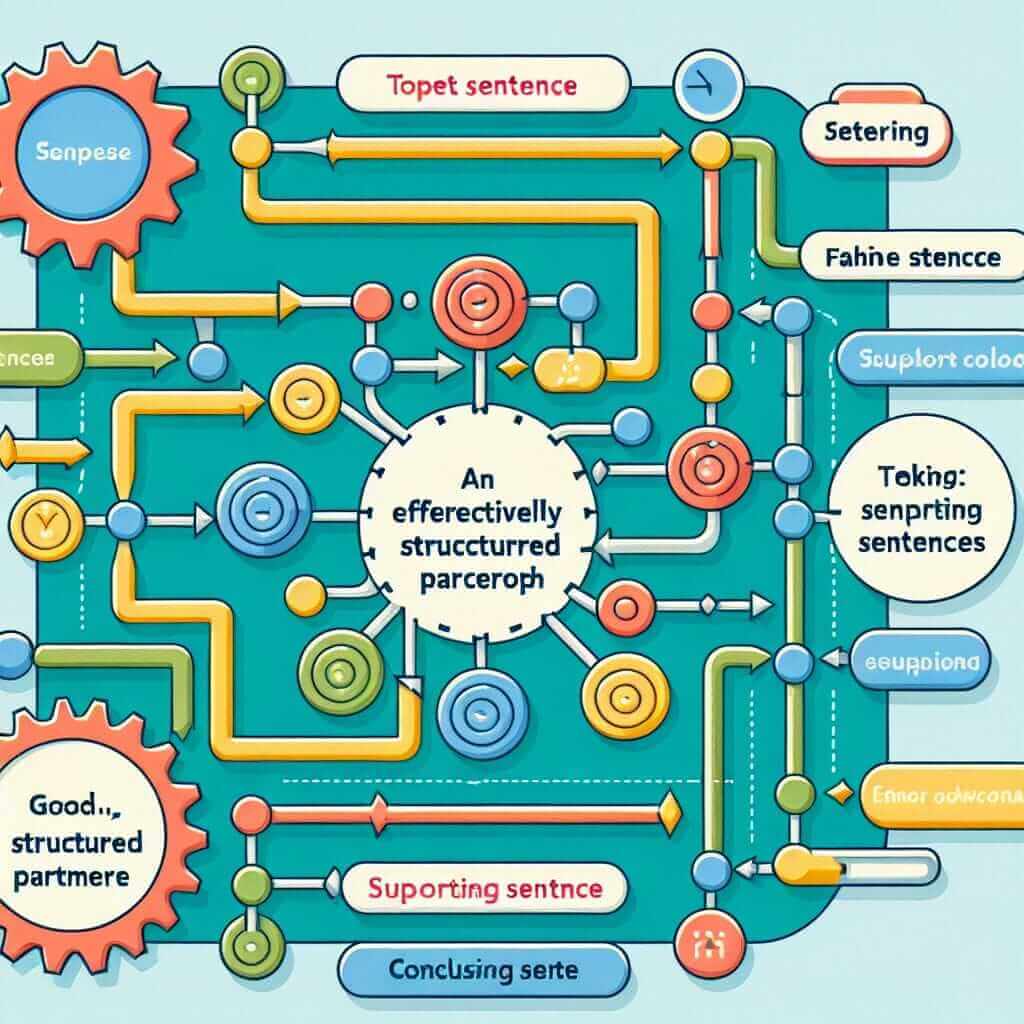For many IELTS test-takers, achieving a high score in the Writing test can feel like scaling a mountain. One crucial aspect of success is understanding how to write a paragraph for IELTS that is both clear and cohesive. Whether you’re tackling Task 1’s data analysis or Task 2’s essay writing, well-structured paragraphs are essential for conveying your ideas effectively and demonstrating your English language proficiency.
Why is Paragraphing Important for IELTS Writing?
In the realm of IELTS Writing, paragraphs are the building blocks of your responses. They provide a structure that makes your writing easy to follow and understand. Imagine trying to read an essay where all the sentences are crammed together – it would be overwhelming! Here’s why mastering paragraphing is key:
- Clarity: Paragraphs separate ideas into manageable chunks, allowing the examiner to easily follow your train of thought.
- Cohesion: A well-structured paragraph uses linking words and phrases to connect sentences and show the relationship between ideas.
- Coherence: By developing one main idea per paragraph, you create a logical flow of information throughout your response.
- Examiner Expectations: IELTS examiners specifically assess your ability to present information with clear organization and progression.
Constructing an Effective IELTS Paragraph
Now that we understand the importance, let’s break down the anatomy of a well-structured paragraph for IELTS Writing:
1. Topic Sentence: Setting the Stage
Think of the topic sentence as the “mini-introduction” to your paragraph. It should clearly state the main point or idea that you will be discussing.
Example:
- Topic: The advantages of studying abroad.
- Possible Topic Sentence: There are numerous benefits to pursuing higher education in a foreign country.
2. Supporting Sentences: Providing Evidence and Explanation
These sentences form the heart of your paragraph. Here, you provide evidence, examples, explanations, or details to support the claim made in your topic sentence. Aim for at least 2-3 supporting sentences.
Example (Continuing from above):
- Firstly, studying abroad allows students to immerse themselves in a new culture and gain a global perspective.
- Moreover, international students often have access to a wider range of academic programs and specialized courses.
3. Linking Words: Creating a Seamless Flow
Transitions are essential for connecting sentences within a paragraph and creating a sense of flow. Use linking words and phrases to show contrast, addition, cause and effect, etc.
Examples:
- Addition: Furthermore, Moreover, In addition
- Contrast: However, On the other hand, Despite
- Example: For instance, Such as, To illustrate
4. Concluding Sentence: Wrapping Up the Idea
While not always necessary, a concluding sentence can help summarize the main point of the paragraph or provide a smooth transition to the next.
Example (Continuing from above):
- Therefore, the experience of studying abroad fosters personal growth, academic enrichment, and enhanced career prospects.
IELTS Paragraphing in Action: Task 1 vs. Task 2
The principles of paragraphing remain consistent across both Writing tasks, but their application might differ slightly:
Task 1 (Data Analysis):
- Paragraph 1 (Introduction): Paraphrase the task and provide an overview of the data.
- Paragraphs 2-3 (Body): Describe key features, trends, or comparisons. Use specific data points as evidence.
- (Optional) Concluding Paragraph: Summarize main trends or observations.
Task 2 (Essay):
- Paragraph 1 (Introduction): Introduce the topic and state your position (if applicable).
- Paragraphs 2-4 (Body): Develop your arguments or points of view. Each paragraph should focus on one key idea.
- Paragraph 5 (Conclusion): Restate your main points and provide a final thought.

Tips for Effective IELTS Paragraphing:
- Plan before you write: Jot down your main ideas and the supporting details you’ll use for each.
- Vary your sentence structure: Use a mix of simple, compound, and complex sentences to add variety and demonstrate grammatical range.
- Practice makes perfect: The more you practice writing structured paragraphs, the more natural it will become.
Conclusion:
Mastering the art of paragraphing is a cornerstone of achieving success in the IELTS Writing test. By understanding the key elements of a well-structured paragraph and practicing your writing skills, you’ll be well-equipped to impress the examiners with clear, cohesive, and coherent responses.